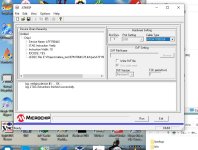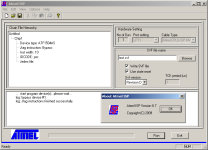bladamson
Veteran Member
So I have been looking over this: https://www.5volts.ch/pages/qbusmemory/qbusmemory/
It's a 4 meg sram card for qbus using modern-ish components. I want to use this (the cpld code in particular) as a path to building my own on a glitchworks protoboard, except with 512k x 8 through hole srams instead of the surface mount stuff he's using. I don't think that will be a huge issue, just a matter of some extra chip select decoding. However it says on the web page.......
"The current CPLD design only supports normal DATI and DATO/DATOB cycles. However the circuit has been made with block mode DMA in mind and all necessary signals connect to the CPLD and connect with the Q-Bus if required."
I am pretty green on PDP-11 stuff, so what implications does this have as far as what operating systems will work with the card? Is this going to cause any trouble with RSX-11 or 2.11BSD? I have a vintage 32kW card that appears to work that I can use for RT-11 if I have to, and I have a qbone to assemble that can emulate memory if the lack of DMA support in the above CPLD design will prevent me from running RSX-11 or 2.11BSD on it. But ultimately I'd like to emulate as little as I can realistically get away with.
Thanks folks. I apologize for my ignorance and I really appreciate any advice you have.
It's a 4 meg sram card for qbus using modern-ish components. I want to use this (the cpld code in particular) as a path to building my own on a glitchworks protoboard, except with 512k x 8 through hole srams instead of the surface mount stuff he's using. I don't think that will be a huge issue, just a matter of some extra chip select decoding. However it says on the web page.......
"The current CPLD design only supports normal DATI and DATO/DATOB cycles. However the circuit has been made with block mode DMA in mind and all necessary signals connect to the CPLD and connect with the Q-Bus if required."
I am pretty green on PDP-11 stuff, so what implications does this have as far as what operating systems will work with the card? Is this going to cause any trouble with RSX-11 or 2.11BSD? I have a vintage 32kW card that appears to work that I can use for RT-11 if I have to, and I have a qbone to assemble that can emulate memory if the lack of DMA support in the above CPLD design will prevent me from running RSX-11 or 2.11BSD on it. But ultimately I'd like to emulate as little as I can realistically get away with.
Thanks folks. I apologize for my ignorance and I really appreciate any advice you have.


